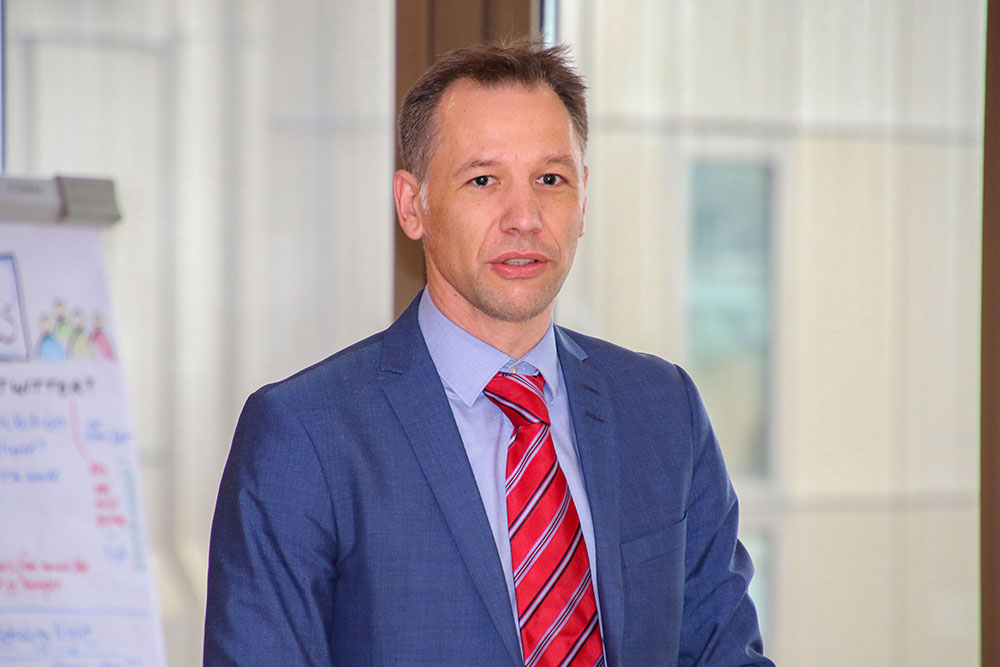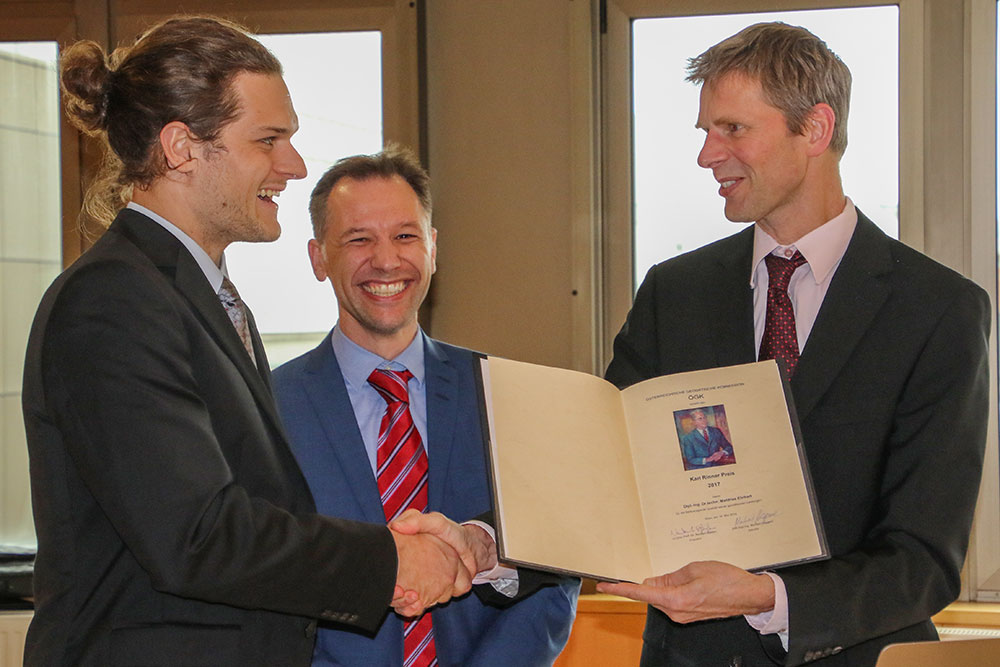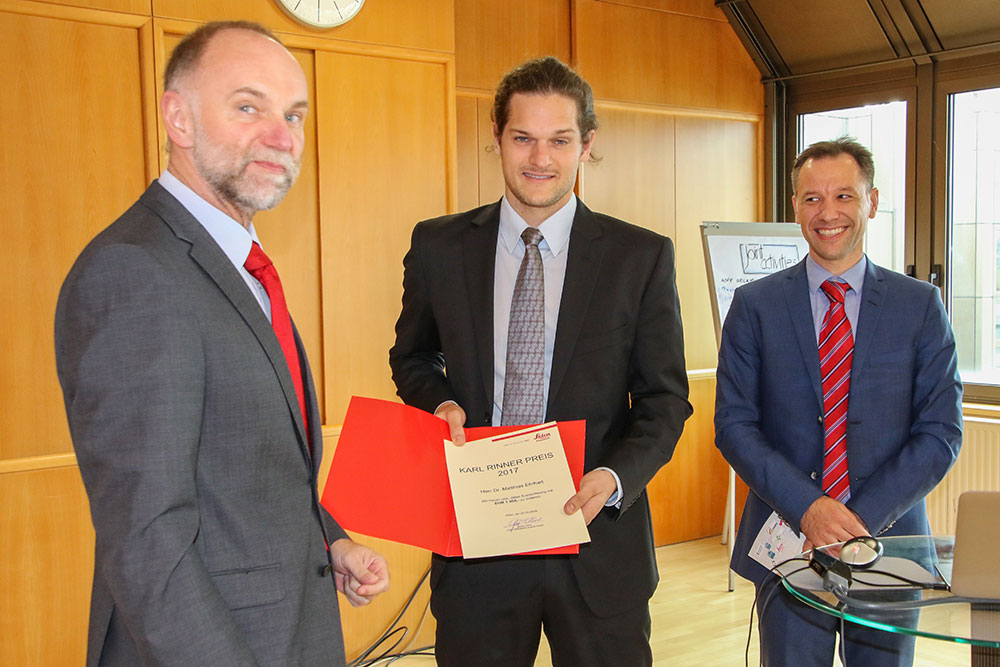Verleihung des Karl Rinner Preises 2017
Die Verleihung des Karl Rinner Preises 2017 an Dr. Mathias Ehrhart fand am 25. Oktober 2018 im Rahmen einer öffentlichen Festsitzung der Österreichischen Geodätischen Kommission im Ferdinand Eidherr Saal des Bundesamtes für Eich- und Vermessungswesen, Wien, gemeinsam mit der Vergabe der Hopfner-Medaille der ÖGK, statt.
Nach der von Univ.Prof. Lienhart gehaltenen Laudatio wurde die Karl Rinner Preis Urkunde vom Präsidenten der ÖGK, Univ.Prof. Pfeifer und der von der Fa. Leica Geosystems Austria gesponserte Preisscheck von Hr. Georg Flechl überreicht.
Im Anschluss an die Preisverleihung hielt Dr. Ehrhart seinen Festvortrag: „Anwendungen von Video Totalstationen“
Zum Download:
- Curriculum Vitae
- Ausgezeichnete Publikation: Erhart & Lienhart (2017), Accurate Measurements with Image-Assisted Total Stations and Their Prerequisites (DOI: 10.1061/(ASCE)SU.1943-5428.0000208)
- Präsentation Festvortrag
- Publikation in der Österreichische Zeitschrift für Vermessung und Geoinformation (VGI), Heft 1/2019, 107. Jahrgang
Zusammenfassung der ausgezeichneten Publikation:
Accurate Measurements with Image-Assisted Total Stations and Their Prerequisites
Video theodolites were used in the 1980s for highly accurate, automated measurements. However, they disappeared from the market and research on these instruments was done by only a few institutions using self-made prototypes. Because of the release of new-generation image-assisted total stations (IATS) by different manufacturers since 2004, these instruments have become relevant again for broader user groups. In this article, different error sources that occur when working with an IATS are assessed. The theoretical origins of these errors are discussed, their dependence on the measurement geometry is worked out, and strategies for avoidance and modeling are provided. In experimental geodetic network measurements, the impact of the different error sources on the results are evaluated. With standard deviations of a few 0.01 mm for the estimated three-dimensional (3D) coordinates, it is demonstrated that the telescope camera of a modern IATS can be used as a highly accurate measurement sensor.










